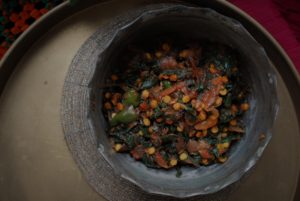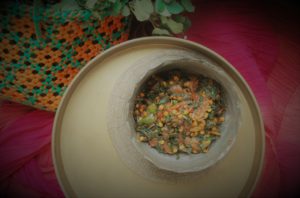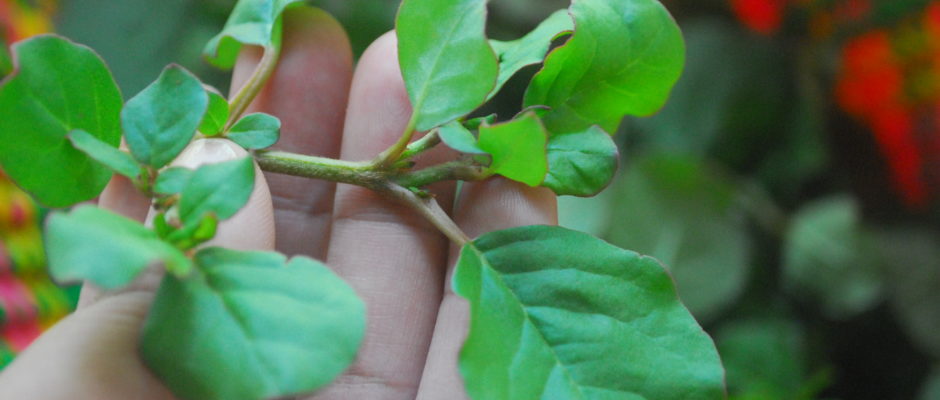Simplicity Coimbatore , Keera, keera , keera

Those of us who have been brought up in Coimbatore since infancy have grown up hearing the elders talk of waiting for the “summer showers” in April. This city with the perfect tropical climate comprising of just the right amount of warmth, breezy evenings and many water bodies was what first attracted people to settling down here. With agriculture being a large part of the landscape the food too was a celebration of that which grew around here and the hill stations close by.

After many years of failed rains and a lack of summer showers ,this year is showing promising signs of April showers. Since my introduction to farming a few years ago, the sight that is always welcoming is when the ground is lush with rain fed edible greens. Referred to as kattu keerai in the vernacular,there are so many in number. While most people are familiar with the thandu keerai and paruppu keerai ,the purslane which is referred to as ‘saranai’ in farmer parlance is known to very few city dwellers. This keerai grows in such huge volumes that it often ends up as fodder for the farm animals.
Recently a cousin-in-law texted me asking where she could source kale. Kale has gained popularity in the recent years because of it’s super food status. It is loaded with antioxidants, vitamins and minerals. It is also very tasty and easy to use in many recipes.

The only disadvantage is that it’s not a native green to the Indian sub continent.So even if it’s grown in these parts, the seeds come from a foreign country and therefore it’s not entirely suited to our DNA and it is available in small quantities at a premium cost. And since we are all part of the English speaking world(and rightly so) we get to educate ourselves about the properties of kale more and not so much about our local green ‘the saranai’. So I told my cousin that this purslane was growing in wild abandon all over our farm thanks to the recent showers and asked if she’d like to try it. After reading up on all the purslane information which I shared with her,she showed a lot of enthusiasm.Thanks to her we harvested as much of this wild green that we could.
Not only did she like it but so did all the other folks with whom I shared this summer shower nurtured bounty. This keerai (greens) doesn’t have a bitter taste. It absorbs flavours very well and is tasty both in a stir fry ,a gravy and with lentils.
Purslane has been termed as the world’s second healthiest of greens by Michael Pollan (author of In Defense of Food,an eater’s manifesto).Red purslane seeds are available online and cultivated in the West.It is used raw in many salad recipes.India on the other hand is a country where this grows wild ,like a weed.

This is a prime example of something being easily available and having little value. It grows not just in the farms but even in the smallest of gardens.They can be easily identified by the round leaves, fleshy pink stems and if you look carefully , the leaves have a thin pink rim around it. But do beware of other plants which resemble the purslane in shape .They are poisonous.
It gives me immense satisfaction to turn wild ingredients into tasty home cooked dishes for the family.These greens are easy to clean and quick to cook.We made a simple sabzi (poriyal with flavours from the North) by doing a simple sauté of onions, garlic, green chillies,bengal gram and tomatoes with jeera powder, dhania powder, turmeric and salt. The cleaned purslane was roughly torn and added at the end .It was cooked until the water evaporated and the leaves wilted.It was delicious with a helping of cooked ponni rice and ghee. After adding the purslane images on my instagram story ,it garnered a great deal of interest. (A few friends tried this recipe and gave great feedback with their respective pictures!)

Our local foods like this purslane are as nutritious as some of the famous super foods of the Western world. Purslane contains the highest amount of omega 3 found in green leafy vegetables. It is an excellent source of Vitamin A ,Vitamin C and B complex vitamins like riboflavin,niacin,pyridoxine.These leaves are rich in iron, calcium,potassium , manganese and magnesium.In addition there are various benefits wherein consuming purslane helps prevent diseases.These benefits are listed on numerous health websites.
This incredibly nutritious ingredient thrives on rainfall. The North east monsoons which begin around October are looked forward to eagerly by the farming community.To see the lakes, ponds and wells filling up is such a welcome sight.With climatic change becoming increasingly obvious, we must take steps to harvest as much rainfall as we possibly can. The purslane pops up quickly and fans out into a lush patch within a week. A friend’s cook identified it as the “gangavalli kura’ as it’s referred to in Telugu….and thereafter proceeded to make a delicious dish out of it. Another friend said her daughter loved the taste so much ,that she could write a poem on purslane.

I think this is more than a good enough reason to talk a walk outside after the rains to go purslane picking. Here’s to health ,wisdom and continued good weather.

Other Indian names for Purslane
Luni bhaji , Kulfa, Gangavalli koora


I have a similar looking weed growing in my balcony pot, would you be able to confirm if I send you the photo please?
Yes please do mail me